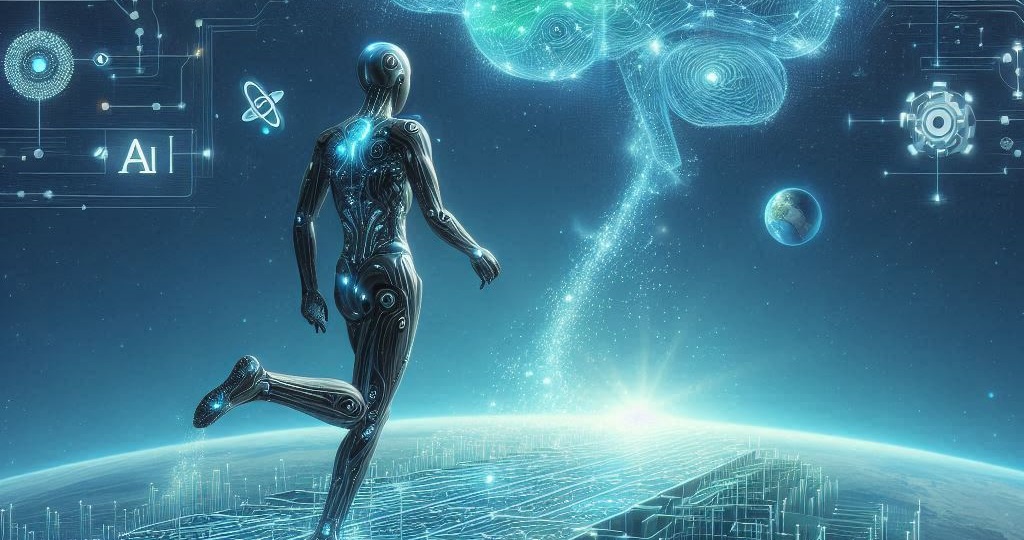Artificial Intelligence (AI) is one of the most transformative technologies of the 21st century, revolutionizing industries, reshaping how we live and work, and pushing the boundaries of human achievement.
Whether it’s helping us navigate daily tasks, enhancing healthcare, or improving business processes, AI has already made its presence felt across a range of sectors. However, for many, the concept of AI can seem complex and intimidating.
This beginner’s guide will break down the basics of AI, explore its applications, and help you understand how it’s shaping our world.
Read More: The Power of Data Analysis: Transforming Information into Actionable Insights
What Is Artificial Intelligence?
Artificial Intelligence refers to the ability of machines to perform tasks that typically require human intelligence. These tasks can include problem-solving, learning, reasoning, understanding language, and recognizing patterns. AI systems are designed to mimic human cognitive functions, though at times, they surpass human capabilities in speed and efficiency.
At its core, AI relies on algorithms—step-by-step instructions that tell a machine how to solve problems or make decisions. These algorithms are then “trained” on data, allowing the AI to improve its performance over time. For example, an AI model trained on thousands of images can eventually learn to recognize and classify new images based on patterns it has seen before.
Types of AI
AI can be classified into three main categories:
- Narrow AI (Weak AI): This type of AI is designed to perform specific tasks. It doesn’t possess general intelligence or the ability to perform tasks outside of its programming. Examples include voice assistants like Siri and Alexa, recommendation algorithms on Netflix or Amazon, and image recognition systems used in photo tagging.
- General AI (Strong AI): General AI, still theoretical, would possess the ability to perform any intellectual task that a human can. This level of AI would have cognitive abilities similar to those of humans, enabling it to adapt to a wide range of tasks without being programmed for specific functions.
- Superintelligent AI: This refers to AI that surpasses human intelligence across all fields. While this concept remains speculative, it raises questions about ethics, control, and the potential impact of AI on society.
Key Concepts in AI
Before diving into the applications of AI, it’s important to understand some fundamental concepts that underpin how AI works.
Machine Learning (ML)
Machine Learning is a subset of AI focused on teaching machines to learn from data. Instead of being explicitly programmed, ML algorithms identify patterns in data and make decisions based on those patterns. As more data becomes available, these algorithms can improve their accuracy.
There are three main types of machine learning:
- Supervised Learning: The algorithm is trained on labeled data, meaning the input and output are both provided. For instance, if an algorithm is learning to recognize dogs in images, it would be given images labeled as “dog” or “not dog.”
- Unsupervised Learning: The algorithm is trained on unlabeled data and must identify patterns on its own. This is often used for clustering tasks, where the algorithm groups similar data points together.
- Reinforcement Learning: The algorithm learns by interacting with its environment and receiving feedback in the form of rewards or penalties. This type of learning is used in gaming AI, where agents learn to maximize their score or win rate.
Neural Networks
Neural networks are a key technology in AI that mimics the human brain’s structure. These networks consist of layers of nodes (neurons), and each connection between nodes has a weight that adjusts as the network learns.
Deep Learning, a subset of machine learning, uses large neural networks with many layers (hence the term “deep”) to process vast amounts of data. Deep learning is responsible for many advances in image and speech recognition, natural language processing, and even self-driving cars.
Natural Language Processing (NLP)
NLP is a branch of AI focused on the interaction between computers and human language. It allows machines to understand, interpret, and respond to text and spoken words in a way that is both meaningful and contextually relevant. Common applications of NLP include chatbots, sentiment analysis, and language translation tools like Google Translate.
Real-World Applications of AI
AI has moved beyond science fiction and is now a key part of many aspects of our lives. Here are some of the most prominent applications of AI across different industries:
1. AI in Healthcare
AI is revolutionizing the healthcare industry by enhancing diagnostics, personalizing treatments, and improving patient care.
- Medical Imaging: AI can analyze medical images like X-rays, MRIs, and CT scans with a high degree of accuracy, identifying potential health issues like tumors, fractures, or diseases earlier than a human doctor might.
- Drug Discovery: AI algorithms can sift through vast amounts of data to predict how different drug compounds will react in the human body, significantly accelerating the drug discovery process.
- Virtual Health Assistants: AI-driven health apps can offer medical advice, manage appointments, and provide personalized health recommendations to patients.
2. AI in Finance
AI is transforming how financial services are delivered, improving efficiency, reducing risks, and creating more personalized customer experiences.
- Fraud Detection: AI systems analyze transaction data in real-time to identify patterns of fraudulent activity. These algorithms continuously learn from new fraud attempts, improving their ability to detect potential threats.
- Algorithmic Trading: AI can analyze large datasets and market trends faster than human traders, allowing it to execute trades at the most opportune times. This has led to the rise of high-frequency trading.
- Customer Service: Chatbots and AI-powered customer support tools help financial institutions manage customer inquiries 24/7, offering instant assistance and reducing wait times.
3. AI in Education
AI is reshaping education by offering personalized learning experiences and improving administrative efficiency.
- Adaptive Learning: AI-driven platforms tailor educational content to the individual needs of students. They adjust lessons based on a student’s performance, ensuring that learners move at their own pace.
- Grading Automation: AI can automate grading for multiple-choice and even some essay-based exams, freeing up time for educators to focus on teaching rather than administrative tasks.
- Virtual Tutors: AI-powered virtual tutors can provide on-demand support to students, answering questions and offering feedback outside of traditional classroom hours.
4. AI in Business and Industry
AI is driving efficiency and innovation in business operations, from marketing and sales to logistics and manufacturing.
- Customer Relationship Management (CRM): AI-powered CRM systems can analyze customer interactions to predict future behaviors, personalize marketing campaigns, and optimize customer service.
- Supply Chain Optimization: AI can predict demand, identify potential disruptions, and suggest solutions, helping businesses manage their supply chains more efficiently.
- Robotic Process Automation (RPA): AI-powered bots can perform repetitive tasks like data entry, invoice processing, and HR-related tasks, freeing up human workers for more strategic responsibilities.
5. AI in Transportation
Autonomous vehicles are one of the most exciting applications of AI, promising to reshape how we move goods and people.
- Self-Driving Cars: AI systems use sensors, cameras, and complex algorithms to navigate roads, avoid obstacles, and make real-time decisions. Companies like Tesla, Waymo, and Uber are at the forefront of this technology.
- Traffic Management: AI is being used to optimize traffic flow in cities, reducing congestion and improving safety by analyzing real-time data from vehicles, road conditions, and weather patterns.
Challenges and Ethical Considerations in AI
While AI offers tremendous benefits, it also raises important ethical and societal questions.
Data Privacy and Security
AI systems require massive amounts of data to function effectively. This raises concerns about how data is collected, stored, and used, particularly when it comes to personal information. Companies and governments must ensure that AI systems comply with privacy laws and regulations to protect users.
Job Displacement
As AI and automation become more widespread, there is growing concern about job displacement, particularly in industries reliant on repetitive tasks. However, AI is also creating new job opportunities in fields like data science, machine learning engineering, and AI ethics.
Bias and Fairness
AI systems are only as good as the data they’re trained on. If the training data contains biases, the AI may make biased decisions. This has been a significant issue in facial recognition and hiring algorithms. Developers must prioritize fairness and transparency when designing AI systems.
Conclusion
Artificial Intelligence is no longer a distant concept but a rapidly advancing technology reshaping industries and everyday life. From healthcare and finance to education and transportation, AI is being applied in diverse ways to improve efficiency, enhance decision-making, and unlock new possibilities.
However, with these opportunities come challenges, particularly around data privacy, job displacement, and bias. As AI continues to evolve, understanding its fundamentals and applications will be crucial for navigating this exciting and transformative era.








